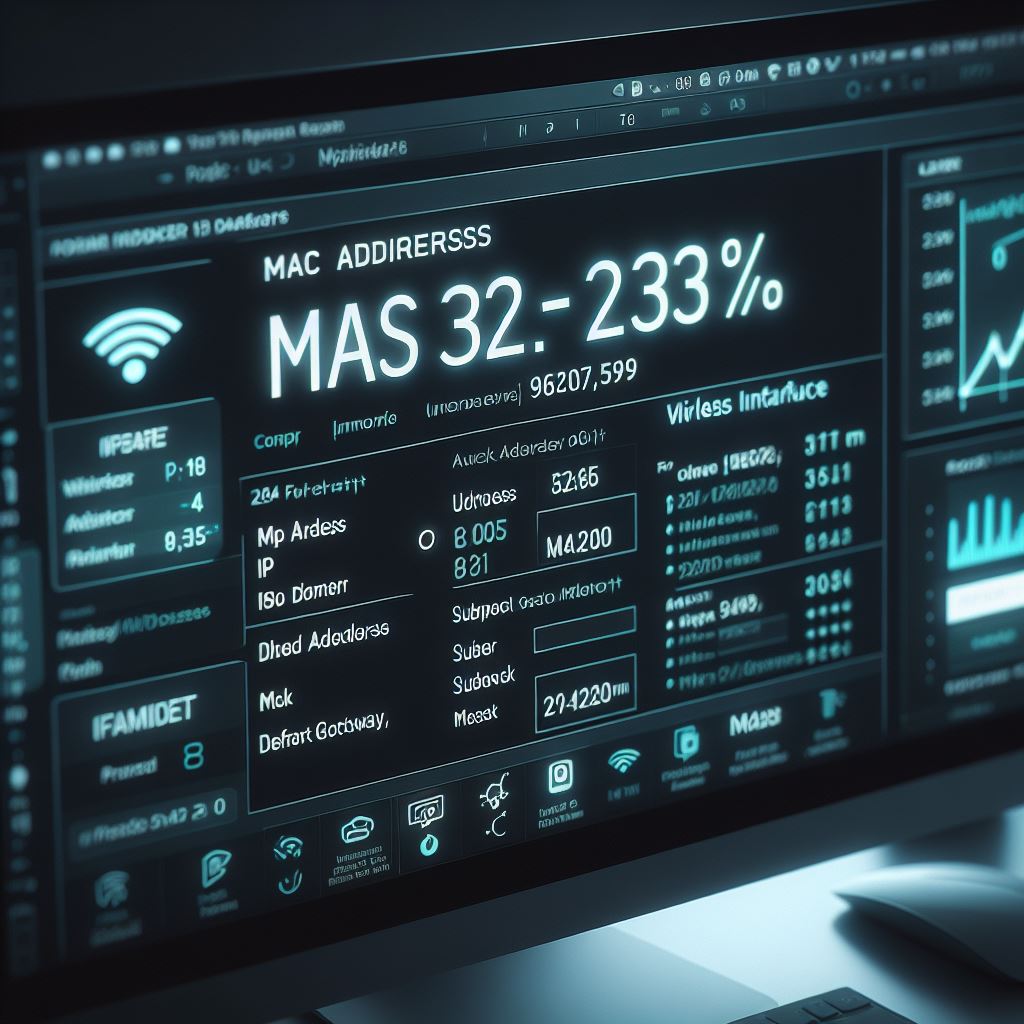MAC Address Description
A MAC (Media Access Control) address is a unique identifier assigned to network interfaces for communications on the physical network segment. It’s a hardware address that identifies each device on a network. MAC addresses are used in the network’s media access control protocol sublayer of the OSI model.
MAC addresses are most often assigned by the manufacturer of a network interface card (NIC) and are stored in its hardware, such as the card’s read-only memory or some other firmware mechanism. A MAC address typically consists of six pairs of hexadecimal digits, for example, 00:1A:C2:7B:00:47.

Computer screen showing an impression of a MAC address
Basic Use of MAC Address
- Network Communication: The primary role of a MAC address is to ensure that data packets reach the correct destination on a local network segment. It operates at Layer 2 (Data Link Layer) of the OSI model.
- Device Identification: Each device on a network, like a computer, router, or printer, has a unique MAC address, which allows for its precise identification in the network.
- Network Access Control: MAC addresses can be used for controlling access to a network. Network administrators may set up MAC address filtering to allow or deny network access to specific devices.
- Data Framing: In Ethernet networks, MAC addresses are used in the framing of data packets. Each Ethernet frame contains both the source and destination MAC addresses to facilitate data transmission within the network.
- Network Switching: Network switches use MAC addresses to forward data to the correct device on a LAN. When a switch receives a packet, it reads the destination MAC address and forwards the packet to the corresponding device.
Uniqueness and Limitations
- Uniqueness: MAC addresses are generally unique as they are assigned by the manufacturer. However, they can be spoofed or altered, which is a technique sometimes used in network attacks or for privacy reasons.
- Scope: MAC addresses are only relevant and unique within the scope of a single local network. They are not used for routing traffic between different networks across the internet – this is the role of IP addresses.
MAC addresses play a crucial role in the data link layer of network communication, ensuring that data packets are accurately delivered to devices within a local network.
Extra
Media Access Control
